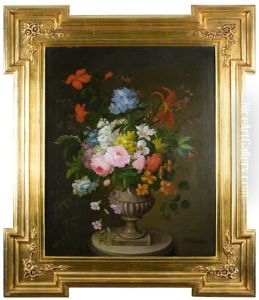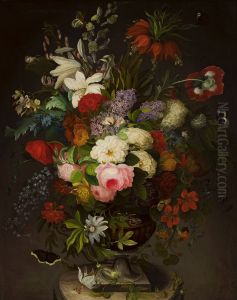Henryka Beyer Paintings
Henryka Beyer was a Polish painter, born in 1815 in Warsaw, then part of the Kingdom of Poland under Russian control. She was among the first women in the country to pursue a professional career in the arts at a time when such aspirations were often restricted by societal norms. Despite the limited opportunities available to women in the art world during the 19th century, Beyer managed to establish herself as a respected artist, particularly known for her portrait paintings.
Beyer's early life and education were marked by the cultural richness of Warsaw, which had a vibrant artistic community. She showed an early talent for painting and, defying traditional gender roles, sought to develop her skills in an environment that was largely male-dominated. Although the specifics of her training are not well-documented, it is believed that she studied under well-known artists of the time, possibly working as an apprentice to more established painters.
Throughout her career, Beyer's work was characterized by a keen attention to detail and a strong grasp of color and light. Her portraits often captured the essence of her subjects with a combination of realism and sensitivity. She painted members of the Polish nobility and the intelligentsia, contributing to the preservation of the cultural identity of Poland during a period of political upheaval and foreign domination.
In addition to her portraits, Beyer also painted religious subjects and scenes from Polish history, reflecting her deep connection to her homeland and its cultural heritage. Her works were exhibited in various art salons and exhibitions, allowing her to gain recognition beyond Poland's borders.
Henryka Beyer's contributions to the art world were significant not only for her artistic output but also for paving the way for future generations of female artists in Poland and beyond. Her dedication to her craft and her success in a male-dominated field provided an early model of female empowerment in the arts.
Beyer's death in 1865 marked the end of a life dedicated to art and the portrayal of Polish society and culture. Her legacy lives on in her paintings, which continue to be appreciated for their technical skill and historical significance. Although not as widely known as some of her contemporaries, Beyer's work remains an important part of the narrative of 19th-century Polish art.



